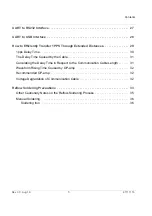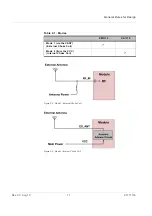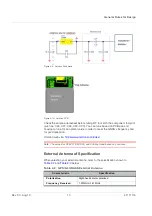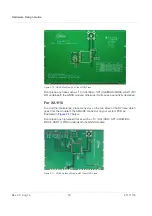
General Rules for Design
Rev 3.0 Aug.19
9
41111116
Figure 2-3: Addition of Pull-up Resistor
SPI (CS/CLK/MISO/MOSI)
1.
The serial peripheral interface port manages the communication between the
digital BB and external devices. The MT3333 supports only slave mode. The
slave has a 4 byte-register mode or
URAM
mode. In URAM mode, the size of
the transmitted and received data is 256 bytes. The clock phase and clock
polarity are selectable. The MT3333 supports a manual or automatic indicator
for data transfer in slave mode. The bit rate is up to 700kb/s.
Antenna Compliance Design
The GNSS antenna is the receiving part of the device that acquires weak GNSS
signals from the sky. A common solution is to use a ceramic patch antenna
because of its small form factor and low cost. There are two types of antennas:
passive and active.
A
passive
antenna, is a standalone component without a signal amplifier such as
an LNA. Patch antennas and chip antennas are the most commonly used passive
antennas with GNSS modules. When using an external passive antenna, ensure
that it is correctly fine-tuned for the specific module to ensure best possible signal
strength.
An
Active
antenna is a standalone external antenna that comes with an integrated
LNA. These antennas provide higher gain and better performance than that of a
passive antenna. An example of an active antenna includes Patch Antenna with
RF Cable and Integrated LNA.
Antenna should be chosen according to radiation efficiency, radiation pattern,
gain, bandwidth, form factor, and cost. Make sure the ground plane is sufficient
for the antenna to ensure best performance.










































